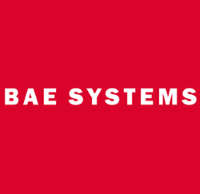Анализ компании Arcadis NV
1. Резюме
Плюсы
- Доходность акции за последний год (68.86%) выше чем средняя по сектору (-29.44%).
- Текущая эффективность компании (ROE=15.04%) выше чем в среднем по сектору (ROE=13.47%)
Минусы
- Цена (68.81 $) выше справедливой оценки (26.08 $)
- Дивиденды (1.24%) меньше среднего по сектору (13.85%).
- Текущий уровень задолженности 23.9% увеличился за 5 лет c 21.72%.
Похожие компании
2. Цена акции и эффективность
2.1. Цена акции
2.2. Новости
2.3. Рыночная эффективность
| Arcadis NV | Industrials | Индекс | |
|---|---|---|---|
| 7 дней | -2.4% | 0% | 4.4% |
| 90 дней | 7.5% | -38.1% | 12.3% |
| 1 год | 68.9% | -29.4% | 36.7% |
ARCVF vs Сектор: Arcadis NV превзошел сектор "Industrials" на 98.3% за последний год.
ARCVF vs Рынок: Arcadis NV превзошел рынок на 32.18% за последний год.
Стабильная цена: ARCVF не является значительно более волатильным чем остальная часть рынка на "OTC" за последние 3 месяца, типичные отклонения в пределах +/- 5% в неделю.
Длительный промежуток: ARCVF с недельной волатильностью в 1.32% за прошедший год.
3. Резюме по отчету
4. Фундаменальный анализ
4.1. Цена акции и прогноз цены
Выше справедливой цены: Текущая цена (68.81 $) выше справедливой (26.08 $).
Цена выше справедливой: Текущая цена (68.81 $) выше справедливой на 62.1%.
4.2. P/E
P/E vs Сектор: Показатель P/E компании (26.69) ниже чем у сектора в целом (41.38).
P/E vs Рынок: Показатель P/E компании (26.69) ниже чем у рынка в целом (53.07).
4.2.1 P/E Похожие компании
4.3. P/BV
P/BV vs Сектор: Показатель P/BV компании (4.02) выше чем у сектора в целом (3.95).
P/BV vs Рынок: Показатель P/BV компании (4.02) выше чем у рынка в целом (-9.1).
4.3.1 P/BV Похожие компании
4.4. P/S
P/S vs Сектор: Показатель P/S компании (0.8534) ниже чем у сектора в целом (3.14).
P/S vs Рынок: Показатель P/S компании (0.8534) ниже чем у рынка в целом (5.18).
4.4.1 P/S Похожие компании
4.5. EV/Ebitda
EV/Ebitda vs Сектор: Показатель EV/Ebitda компании (10.96) ниже чем у сектора в целом (122.94).
EV/Ebitda vs Рынок: Показатель EV/Ebitda компании (10.96) ниже чем у рынка в целом (23.95).
5. Доходность
5.1. Доходность и выручка
5.2. Доход на акцию - EPS
5.3. Прошлая доходность Net Income
Тренд доходности: Восходящий и за последние 5 лет вырос на 240.09%.
Замедление доходности: Доходность за последний год (0%) ниже средней доходности за 5 лет (240.09%).
Доходность vs Сектор: Доходность за последний год (0%) превышает доходность по сектору (-4.1%).
5.4. ROE
ROE vs Сектор: Показатель ROE компании (15.04%) выже чем у сектора в целом (13.47%).
ROE vs Рынок: Показатель ROE компании (15.04%) выже чем у рынка в целом (-2.01%).
5.5. ROA
ROA vs Сектор: Показатель ROA компании (4.02%) ниже чем у сектора в целом (4.96%).
ROA vs Рынок: Показатель ROA компании (4.02%) ниже чем у рынка в целом (8.98%).
5.6. ROIC
ROIC vs Сектор: Показатель ROIC компании (0%) ниже чем у сектора в целом (10.31%).
ROIC vs Рынок: Показатель ROIC компании (0%) ниже чем у рынка в целом (11.03%).
7. Дивиденды
7.1. Дивидендная доходность vs Рынок
Низкая див доходность: Дивидендная доходность компании 1.24% ниже средней по сектору '13.85%.
7.2. Стабильность и увеличение выплат
Стабильность дивидендов: Дивидендная доходность компании 1.24% стабильно платится на протяжении последних 7 лет, DSI=0.93.
Слабый рост дивидендов: Дивидендный доход компании 1.24% слабо или не растет за последние 5 лет. Рост на протяжении только 1 год.
7.3. Процент выплат
Покрытие дивидендами: Текущие выплаты из доходов (41.41%) находятся на комфортном уровне.
Оплатите подписку
Больше функциональности и данных для анализа компаний и портфеля доступно по подписке


